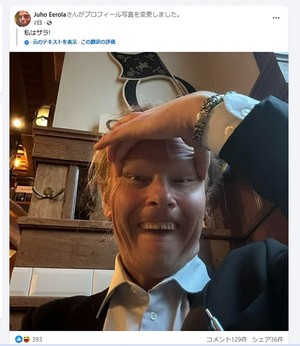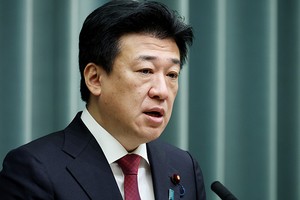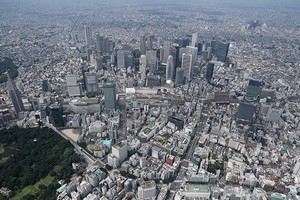By AKEMI KANDA/ Staff Writer
November 17, 2021 at 08:00 JST
Reviving dying coral reefs is about as far removed from Masato Ueda’s experience as one could possibly imagine, given that his field of expertise is metallurgy and its benefits in treating patients in need of artificial joints.
Yet, Ueda is not only up to the task but scoring considerable success in helping to restore reefs in waters off the Yoronto islet in Yoron, Kagoshima Prefecture, as well as coastal areas off Kushimoto in Wakayama Prefecture.
Ueda does that by making use of his knowledge of arthroplasty, in which aching knee and hip joints are surgically replaced with prosthetics. He is a professor of materials technology at Kansai University in Suita, Osaka Prefecture.
His method of coral revival relies on taking pieces of coral and transplanting them onto a metallic sheet, normally used for artificial joint parts, to spur growth. He uses no other special equipment or adhesives.
Coral reefs form a key part of the underwater ecosystem and are essential for biodiversity as they serve as habitats for fish and other marine life. However, reefs around the world are under threat due to rising water temperatures caused by global warming, marine pollution and coastal development.
Researchers both in and out of Japan are furiously working on ways to save and revive coral reefs.
Kansai University initiated a project in 2015 to help revive coral reefs in Japanese waters. Ueda was asked to join the program on the basis of his work with metal materials, although he knew next to nothing about the so-called forests of the sea.
After a steep learning curve, Ueda realized that human skeletal structures share common elements with coral. They both have a cell known as osteoblast, which secretes the substance that forms bone.
Since Ueda knew that treating the surface of titanium for oxidation allows bone cells and artificial joints to stick to one another easily, he concluded that an oxidized titanium surface for joint prosthesis application “may prove helpful.”
Coral reefs have soft tissue called polyp on their skeletal frames, which is made of calcium carbonate, and the bone structure and polyp layers grow over time.
Ueda stabilized a coral fragment with stainless steel wire on a metal rod fashioned from the same material as the treated titanium for artificial joints, and found polyp formed on the titanium bar. However, polyp did not spread on the stainless steel wire.
“The coral apparently mistook the titanium for a bone frame,” Ueda said.
The researcher is continuing with his experiments in a water tank to determine how differently small coral pieces fastened with wires will grow on two sorts of titanium sheet measuring 4 centimeters by 4 cm, one of which is oxidized and the other left untreated.
His research involves determining the difference in growth under different levels of salinity and water temperature.
Ueda’s research team is also forging ahead with a study in waters off the Yoronto islet, which is part of the Amami island chain southwest of Kyushu in southern Japan, as well as Kushimoto at the southernmost point of the main island of Honshu.
“There is a limit to what a single team can do for coral reef reconstruction, but doing nothing because of that is not a reasonable excuse,” said Ueda, explaining his continuing fascination with the project.
He raised more than 3 million yen ($26,340) for his research in Yoronto from the public through a crowdfunding campaign that ended on Nov. 11.
The names of those who donated 10,000 yen or more will be engraved through oxidation treatment on titanium to which coral will be transplanted.
“I want people to see how transplanted coral can grow,” Ueda said. “I hit upon the crowdfunding campaign to encourage continuing public interest in environmental issues.”




















A peek through the music industry’s curtain at the producers who harnessed social media to help their idols go global.
A series based on diplomatic documents declassified by Japan’s Foreign Ministry
Here is a collection of first-hand accounts by “hibakusha” atomic bomb survivors.
Cooking experts, chefs and others involved in the field of food introduce their special recipes intertwined with their paths in life.
A series about Japanese-Americans and their memories of World War II